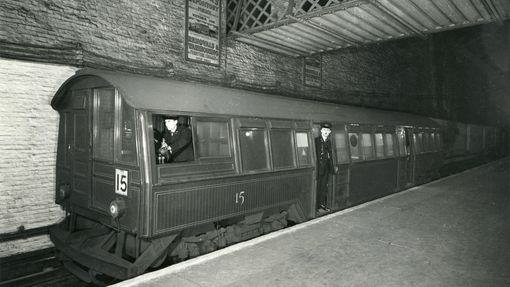
The Elizabeth line
Key facts
Length: 118km
Stations: 41
10 new
31 improved
Opened: 24 May 2022
Introduction
The Elizabeth line is London’s first accessible railway. It is the result of the biggest infrastructure project in a generation and, as a concept, can trace its history back over a century.
The new railway connects the mainline stations at Paddington and Liverpool Street with Heathrow Airport and Reading in the west, and with Shenfield and Abbey Wood in the east. It increases central London’s rail capacity by 10%, taking pressure off some of the Underground’s busiest interchanges.
Each of its fast air-conditioned walk-through trains are nine carriages long, with space for up to 1,500 people.
Why is it called the Elizabeth line?
Through most of its planning and construction, the new line was known as Crossrail. In February 2016 it was renamed the Elizabeth line by Boris Johnson, then Mayor of London, to honour Queen Elizabeth II.
Did you know?
The line was nearly named the Churchill line, after the wartime Prime Minister Winston Churchill
Origins
The Elizabeth line runs through London’s first new deep tube tunnels this century, but the project dates back much further.
An east-west tube railway linking mainline termini was first proposed in 1919, by the Underground’s Commercial Manager, Frank Pick, and again in the 1943 County of London Plan.
A route very similar to the Elizabeth line, including a link to London Airport, was one of several new railways considered by London Transport after the Second World War, but it never made it off the drawing board at the time.
Other 1940s schemes, including the Victoria line and the Jubilee line extension, were eventually built decades later. An attempt to get Parliamentary approval for what had become known as Crossrail failed in the 1990s, but a new scheme was presented in 2005 and was finally passed in 2008.
The trains and tunnels
The Elizabeth line is unique on the London Underground in that surface stock trains – as big as the S stock than run on the Metropolitan and District lines – run in tube tunnels under the Capital, and far out into Berkshire and Essex on the surface.
Work on the line’s 42km of tunnels started in 2011, with eight huge Tunnel Boring Machines (TBMs) completing the task in four years. The main phase of station building and systems installation took place between 2016 and 2021, with each new station in turn handed over to Transport for London (TfL).
Did you know?
There are 200,000 cast concrete sections in the line’s 42km of tunnels.
The ten new station buildings have a range of architects and approaches inspired by their locations, but the below-ground circulating areas, passages and platforms have a more consistent look and feel. Everything is bigger than the rest of the Underground and scaled to accommodate future growth.
The signature look of the curving white glass fibre reinforced cladding (GFRC) linings predominates the passageways, with gentle flared corners to improve visibility and safety, and minimise clutter. Free-standing finger-posts known as ‘totems’ give clear and consistent directions to exits, platforms and interchanges.
Lifts, ramps, improved signage, crossings and places to stop ensure the stations are accessible, with step-free access to platform level as a minimum. The ten brand new stations have step-free access from train to street.
Did you know?
Staff were trained using a mock station called West Ilford, at the Tunnelling and Underground Academy (TUCA) in Essex
A new depot at Old Oak Common houses and maintain 42 of the Elizabeth line’s 70 new trains at a time and includes many novel features. The building incorporates heating and cooling from ground sources, with solar panels and rainwater harvesting to wash trains. An automatic system scans trains as they enter, reducing the overall time needed for maintenance.
Did you know?
People all over the UK have contributed to the line, with 96% of all contracts going to British companies
Moquette
A new moquette seating pattern was designed by Wallace Sewell for use on the line. The purple colour of the line and logo is reflected in the pattern.
Shop our Elizabeth line-inspired products
How much do you know about the Elizabeth line?
How much do you know about the history of the Elizabeth line and its vital statistics, now that London’s newest railway is open to the public?
Take our quiz now!

![Queen Elizabeth II at Bond Street, [tfl image 15175], February 2016](/sites/default/files/styles/media_component_16_9_sm/public/2022-04/15175%20bond-st-feb2016.jpg?h=6f8e8448&itok=kIU-jjWr)
![A wide concourse with uplighter and signage totems at Farringdon, April 2021 [tfl image 42988]](/sites/default/files/styles/media_component_16_9_sm/public/2022-04/42988%20Farringon%20apr2021.jpg?h=0f4230fa&itok=dldQcdfk)
























